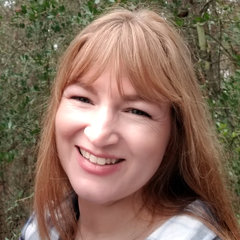After Being a Homeschool Mom: My Journey of Continuing Education


What’re ya’ gonna do now, kid?
This is the question everyone asked my daughter, Tessa, when she became a homeschool graduate. She was the first student to homeschool from kindergarten through twelfth grade in either my husband’s or my family, so, naturally, many of our relatives doubted her ability to thrive in the “real world.” Friends were curious about her plans, and other adults remembered wrestling through their own hopeful, anxiety-filled decisions after high school.
Because Tessa graduated ahead of schedule, and we knew we had quite a bit of domestic and overseas travel ahead of us, our family decided to take the year after her graduation to explore her possibilities. We were leaning toward some combination of community college and/or residential college.
Of course, as our family began talking through opportunities for Tessa, I quickly realized she wasn’t the only one whose future was suddenly full of options. I needed to figure out what was next for me.
For the past 18 years, I had been a full-time, stay-at-home mom, busy with my community and homeschooling my daughter. I treated motherhood and homeschooling like a vocation. I became efficient, focused, goal-oriented. Where I found myself lacking skills, I studied; I learned; I applied theory. I read books on management, home economics, parenting, gardening, history, science, art—you name it, I read it, learned from it, and found practical applications.
To be honest, after quitting my job as a medical billing manager for a growing orthopedic practice to stay home with my newborn girl, I found it difficult to be “just a mom.” But, by the time Tessa graduated, I couldn’t imagine any job that would be equally gratifying or fulfilling.
As people began asking Tessa what her future held for her, I suddenly realized her graduation meant that my most rewarding occupation had ended. And I worried that I would never again find such meaningful work.
I felt lost.
Searching for a roadmap.
To find my way, I began asking for advice from every wise person I knew: my husband, family, friends, clergy. What new adventure is possible for someone like me?
I spoke to my brother, a software engineer and several times executive of successful start-ups. He laughed and told me to forget about a career. “You are too old,” he said. (Brothers always tell the hard truth.)
My aunt, who also had been a stay-at-home mom, became politically active after her sons graduated. She ran successful election campaigns for Texas congressmen, senators, and a governor. She wrote policy for the state attorney general, as well. My aunt agreed with my brother. “Your time is best spent volunteering,” she said.
A pastor I spoke with knew that I spent my free time learning and reading. He recommended I return to school and complete my unfinished bachelor’s degree. My college roommate, who also withdrew from college after only a couple of semesters, recently finished her degree and recommended I locate a university that would accept most of my (now dusty) credits and do the same.
My laid-back husband suggested I do whatever I want. He didn’t need me to supplement our income and was fine with me staying home, looking after “home things.”
This was the first time I had ever been in a position like this: no clear map. So many options. And I could only pick one…
The Journey Begins
During this time of searching, I started a daytime women’s group, taught workshops, and spoke at teens’ and women’s retreats. I wanted to keep doing these kinds of things.
But the idea of returning to college filled me with longing.
After high school, I enrolled in an out-of-state college, and when I found myself on campus for the first time, I felt like I was home. I remember thinking to myself, “If I could afford it, I’d live my entire life on a college campus, studying, learning.” I loved everything about it, and I deeply regretted withdrawing after only three semesters. I quit so early only because I worried about the amount of debt I had already accumulated in such a short time. (It ended up taking me ten years to pay off that debt. Ten years!)
Meanwhile, as I began thinking about options for my future, Tessa decided, after seeing her college entrance exam scores and receiving a couple of generous scholarship offers, maybe she should consider getting a degree herself. After touring a couple of campuses, she decided that she didn’t want to pay for housing. So, we started looking locally.
We checked out the nearby community college, and it still seemed expensive. Not only that, but the academic counselor we spoke with wouldn’t even help her figure out how to ensure that all her community college credits would transfer to the university of her choice! Surely we were not the first people to ask about this. Helping students figure out how to transfer credits seemed like a natural service that community colleges should offer.
During the same visit, I had brought my college transcript with us, just to see which of my credits might be accepted toward a degree. The answer? None.
Tessa and I both left feeling discouraged and frustrated. That is until I remembered Accelerated Pathways from all the homeschool conferences I had previously attended. The Pearson representatives I had met at these events seemed helpful, and this gave us one more option to explore. I checked Accelerated Pathways out online and decided to contact them. We spoke with a Pearson representative who encouraged us both to send in our transcripts (Tessa’s from high school and mine from college) to be evaluated. Then we waited for an academic advisor to call.
What if I get to do both?
As we waited, I continued struggling with my desire to finish my degree. If I returned to college, what degree should I choose? Am I finishing to fulfill a goal, check a box, cross it off the bucket list? Or do I hope to do something with the degree? Would I be headed toward a vocation? If so, should I finish the teaching degree I began after high school? (That didn’t seem very appealing.) If I decided to go down a different road, would I get to use any of those expensive credits I had on my transcript?
And what would that mean for the nonprofit I was part of? When I asked for advice, most people suggested that I should pick one path and follow it full time. Even though I love learning, and I was sure I’d enjoy returning to post-secondary studies, would the trade-off be worth it? I found mentoring, leading small groups, and speaking at retreats to be deeply meaningful. Was I willing to give that up?
I didn’t have to wait very long for answers.
A Pearson advisor phoned very quickly after looking over my transcript. With their help, all but ½ of one of my credits would transfer. I couldn’t believe it! On top of that, the last five semesters needed to earn my degree would end up costing less than what I’d paid for the first three! Wow!
Unlike the community college we visited, the Pearson advisor assured us that every class Tessa or I took through their Accelerated Pathways program would be fully accredited and guaranteed to transfer to the college of our choice. They even offered us some study materials for a few CLEP exams if we wanted to bypass some classes.
All this, and a flexible schedule! Since Accelerated Pathways offers—for the most part—online, self-paced courses, I would have the freedom to learn at my own pace, going as fast or as slow as I liked, arranging my daily schedule in a way that works for me.
After learning about Accelerated Pathways, I realized that I didn’t have to choose just one path. I didn’t have to make an either/or decision. It’s as though two roads became one, and my choice became clear. With a flexible schedule, I could earn my degree and continue building relationships. I could be available for mentorship and be a full-time student! Bonus: I wouldn’t wind up in debtor’s prison along the way. Accelerated Pathways would make it possible to afford my dream of finishing my degree and still enjoy helping people grow.
Tessa realized Accelerated Pathways would give her the same flexible lifestyle she had enjoyed as a homeschooler, and she was pleased she wouldn’t have to spend a lot of time in traffic, commuting to and from campus. Plus, she really loved the idea of graduating from college debt free.
I was sold, and so was Tessa.
We started taking classes with Accelerated Pathways in January 2017. As I now complete my final semesters of college, I’ll be honest—I still have no idea where life will take me next. But what a great time I am having on this leg of my journey!
Want to find out if Accelerated Pathways is a good fit for your family? Check out our website to learn more about the program and how we can help you!
read more
